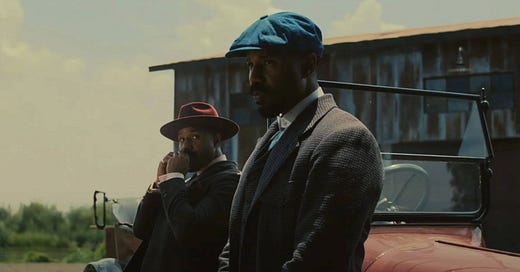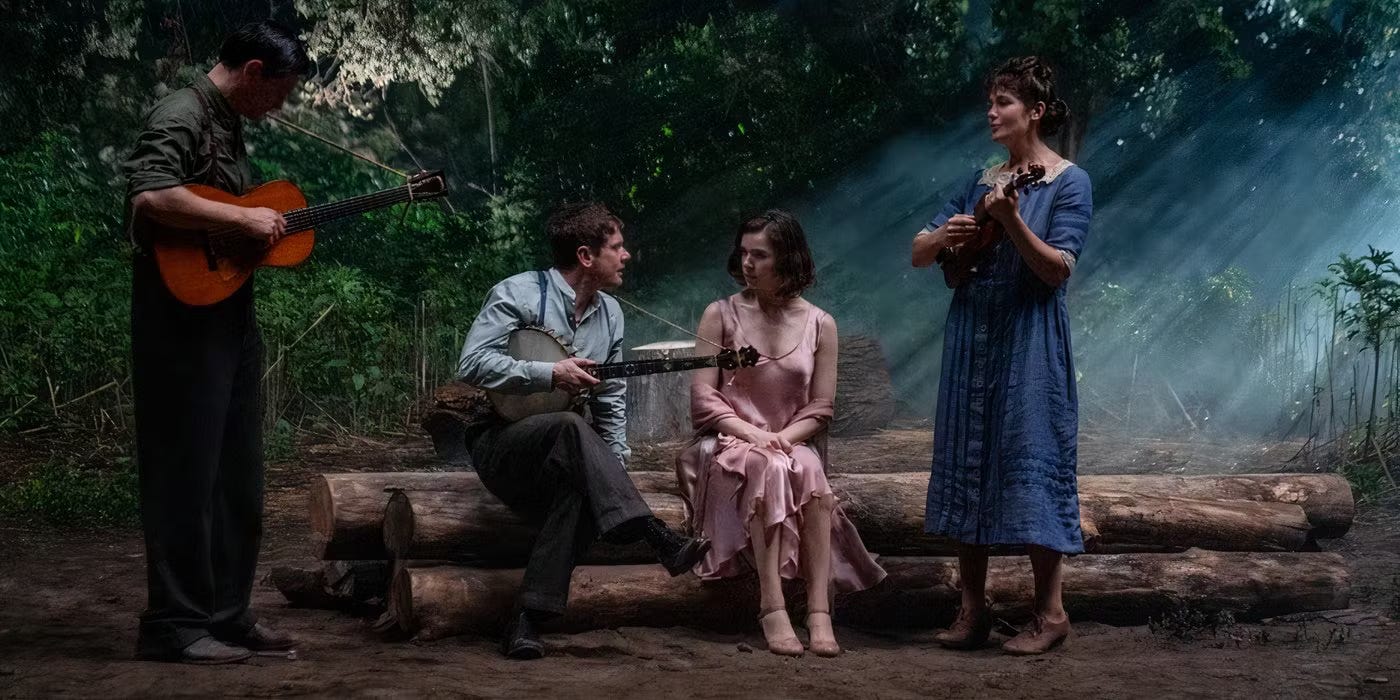When is the last time I felt so exhilarated in a multiplex? I loved Black Bag earlier this year, but Sinners is in a whole different stratosphere: an ambitious, exciting, stylish mash-up that's pop filmmaking at its finest, using the resources of Hollywood to craft something wholly unique, even vital.
Michael B. Jordan fans can rejoice that the actor plays two roles: twin brothers Smoke and Stack, who return to their Mississippi Delta home after years away serving in World War I and then working for Chicago mobsters. They open a juke joint, much to the delight and consternation of those in the community (not all of whom are happy to see the brothers return), but the nightclub will soon become a site where the characters' and the country's demons come out of the woodwork.
The real star here (at least among the actors onscreen) is probably Miles Caton, a newcomer who plays Sammy, a blues guitarist and son of a preacher. There's a lot going on here—narratively, emotionally, thematically—but Sammy provides the movie's structuring device and much of its driving power. He also occasions the most jaw-dropping scene in the film, a real showstopper that delivers a theme about how music transcends time and culture, with a primal energy that can attract "evil" forces as well as good ones. (I can't convey the pure cinematic rush of this scene, which had me and everyone else in my packed theater enthralled—I could tell there was an astounded energy floating in the room.) Papers if not dissertations could be written about the use of music in Sinners, which is focused on the blues but incorporates practically every other genre (even, memorably, Irish folk songs) in ways that both encapsulate and transcend the art of hip-hop.
There are other themes, too: America's foundational sins and whether they can ever be exorcized; the ambiguity of morality, with a religious sort of piety not always representing the meaning of goodness; the Great Migration that saw Black southerners migrate to northern cities in the 20th century; miscegenation, passing, Jim Crow, you name it.
Writer-director Ryan Coogler isn't always able to juggle these ideas smoothly. Certain ideas are provocatively suggested, then abandoned before they're fully explored. There are things I dislike about the second half of the movie—not necessarily the use of horror as allegory (which I normally love), but the specific use of vampires as the monster of choice. I wish the movie had invented its own metaphorical monsters instead: there was the opportunity for something truly terrifying and distinct. The use of vampire folklore, though (their ability to fly, their aversion to garlic, their need to be invited inside, their sheer physical appearance), feels overfamiliar in Sinners, especially when everything else feels so alive and unexpected. Ironically, considering the excitement and sharp editing of Black Panther and Creed, a climactic action scene in Sinners is flat and confusing. A later scene (this is one of those movies with several climaxes—not necessarily in a bad way) is a little too close to Django Unchained for my tastes (a movie I hate).
But this is one of those movies where its overall significance and power has to be weighed more heavily than its individual flaws. Here's a fascinating (if messy) blend of art and entertainment, overflowing with ideas as much as with irrepressible visual and musical energy. It's formally intoxicating (with a style both mournful and euphoric, indebted to Black American photographers like Ernest Withers and Gordon Parks) and unabashedly sexy. As the industry is overwhelmed by streaming platforms like Netflix and Amazon, I find myself wanting to champion major Hollywood studios and the theatrical moviegoing experience. Between Sinners and Black Bag (and hopefully others; I'm dying to see Drop and can't wait for M:I - Final Reckoning), I think/hope 2025 will be a year in which studio releases remind us of the power of sprawling, invigorating, larger-than-life big-screen entertainment.




